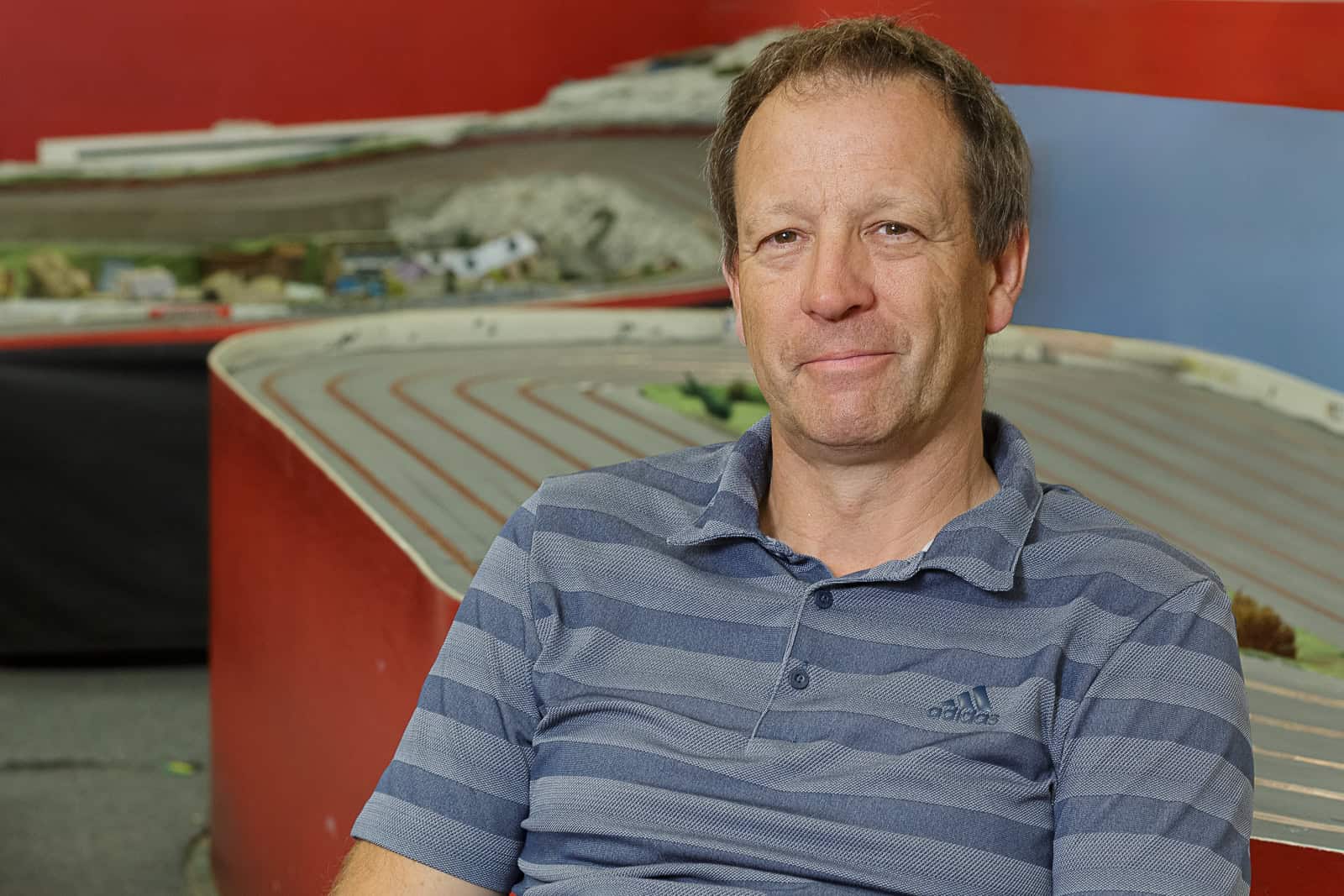Tony used his carpentry skills to construct a permanent track, enabling the club to host…
Little duck blacksmith / artist forges ahead
Strike whilst the iron is VERY hot.
Lucille Scott is an artist/designer blacksmith, creating hand forged metal items, inspired by nature and her love for dance and music. For Lucille, the appeal of working with iron lies in the traditional role of blacksmiths, the permanence of their work, and passing on this tradition to all around her.
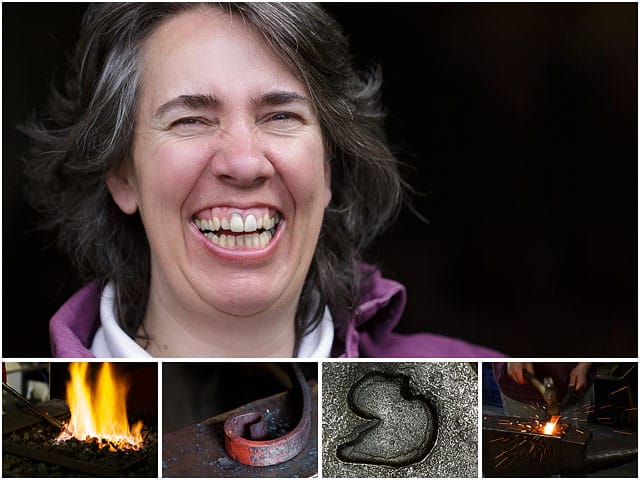
Are you one of Portsmouth’s own?
The family is originally from South Africa. My mother is Afrikaans and my dad is English, from Portsmouth. We came over to the UK, as a family, in 1976 and, in 1977, moved to Finchdean, which is just up the road, of course. We’ve lived there ever since. My dad set up an engineering firm with his brother in Havant. The relevance of that is that I went to Junior school, St Albans, in Leigh Park. Because it was close by, I used to walk to their workshop and sit and watch the blacksmith working in the workshop next door. That was all I used to do, just sit and watch for hours on end.
Years later, he offered me an apprenticeship, but, at the time, I’d just qualified as a teacher and we were in the middle of a recession (late 1980s) so I couldn’t take it up as I had bills to pay etc.

What did you teach?
Design and Technology. Woodwork, metalwork and plastics for eleven to eighteen year olds.
That was in Portsmouth?
I trained in London, Goldsmiths College, but I taught in Churchers College and a number of schools in the Portsmouth area. I did quite a bit of supply teaching, but, more recently, I was head of department at Portsmouth High School.
How long were you there for?
Twelve years. It was a lovely school.
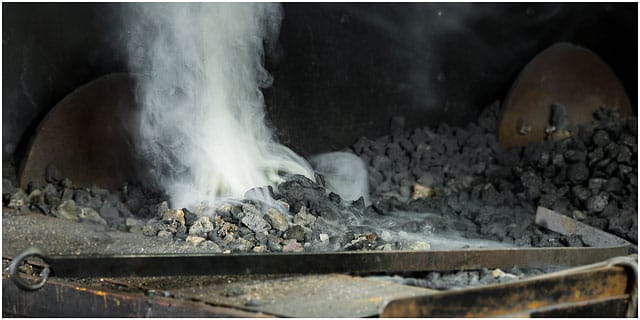
So, not happy with teaching …
No, it wasn’t that I was unhappy with teaching, I just got envious of students going off to study and coming out and doing something that I thought was very exciting. I got to the stage where I thought, “I want to have a go at something where I have that experience.” Teaching, as a skill within the classroom that I was teaching in, was a case of being a Jack of all trades. I really wanted to be a master of one, rather than none. As far as I was concerned, the actual skill was being a teacher, and I wanted to have the skill of being a craft person.
I’d rather be remembered for being the
master of a craft rather than an ‘OK’ teacher.
I never intended to teach long-term. I actually wanted to go into engineering, but I assumed that I would have a family and kids etc; and thought I should really have something that would give me some flexibility. Teaching Design and Technology was the closest I could find to engineering, combined with a lifelong career.
While you were teaching, did you do anything engineering related on the side?
There’s no time. I had a lovely big workshop, all the facilities, all the space and tools, but never had the time to do any personal projects.
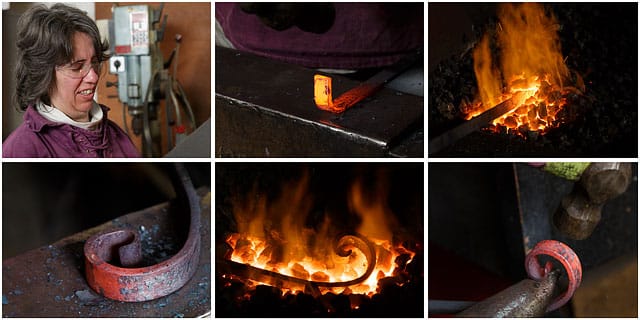
That must have been so frustrating.
When I was head of department at the High School, I was part-time, which allowed me to have the weekends free. But even then, the time just disappeared. Unless you can start a project and keep going with it, it just gets left rusting, or gathering dust in the shed or whatever. So you don’t improve your own skills.
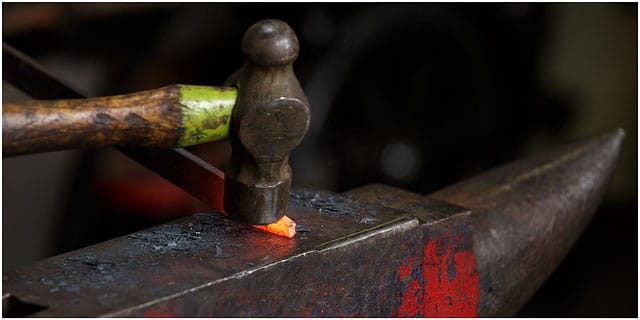
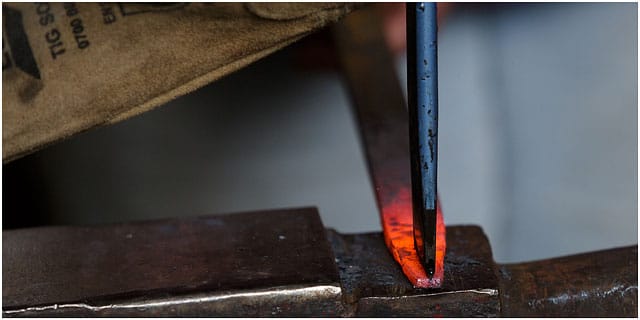
What was the tipping point, or the push that changed things?
I was at the annual exhibition for Design & Technology teachers, at the NEC in Birmingham (2006). Right in the center of the show, they had these two guys demonstrating blacksmithing on a flamefast kit. It was really about the kit rather than the blacksmithing. I just stood there for about an hour, watching them.
… and I thought to myself, Oh
yeah, I remember, this is
actually what I wanted to do.
For years I’d debated with myself about the direction I wanted to take. Should it be woodwork, do I want to go into metalwork. The woodwork is lovely. The smell and feel of the wood; all the different textures but, all though it’s dusty, it’s really quite a clean occupation. Whereas metal is dirty and hard work.
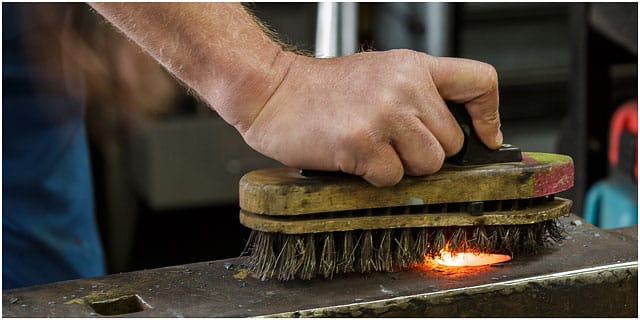
You just wanted to get in there amongst it and get your hands dirty?
Well the thing is, I could never decide between the two. You could be doing something in wood and think, “Oh yeah, this is lovely stuff, I’d really like to master it’” Then it would split on you. [Laughs]. Then you go onto metal and you think, “I want to do this, that and the other, but bloody ell that’s hard work.” So you know, there’s pros and cons for both materials. Right from university, I always wanted to specialise in one material and become really good at it.
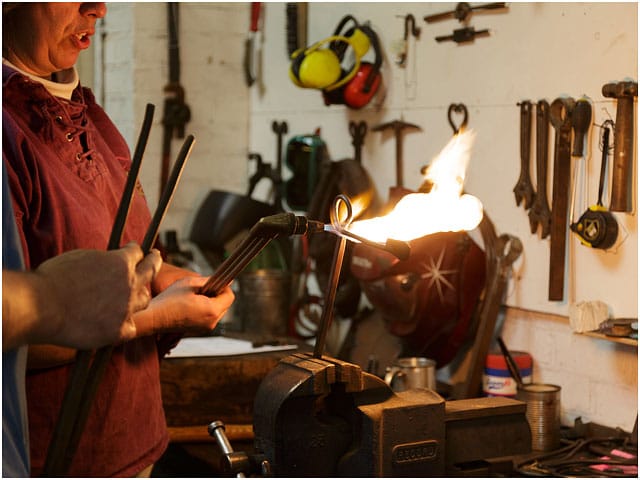
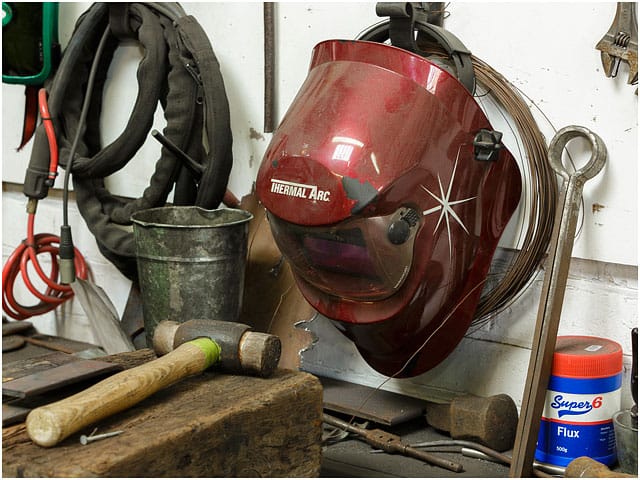
Is that metal in general?
Yes. All and any metals really. Blacksmithing is considered a very specialist part of the general world of metal. You have to focus in on something, then you can expand out after that. I’m still focusing. I’m not going to become a master in a hurry, that’s for sure, but I’m concentrating on hot metal.
Until recently, pig iron/slag was typically poured directly out of the bottom of the blast furnace through a trough into a ladle car for transfer to the steel mill in mostly liquid form. In this state, the pig iron is referred to as hot metal.
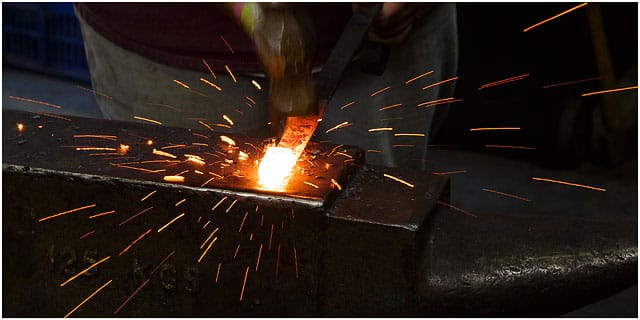
You go home after the NEC show with the beginnings of a plan; what’s the first step?
The guys at the show told me about a group called The British Artists Blacksmith Association (BABA) and said there was a big AGM due at a place called Ironbridge (Shropshire). I knew and liked the area, so I decided to go along and see what it was all about. That gave me the impetus to do something, so I then planned to do weekend courses, to try to build up my skills. A year passed, and I hadn’t managed to do a single course. By then, my second year head of department at the school was retiring, so I basically sacked myself, brought in a new head of department, and took a smaller part-time post to give me more time. Again, I tried to do weekend courses and, once again, it still didn’t happen.
By this time, I was getting desperate at the lack of progress so, in 2009, I decided to take a year’s sabbatical and went to Hereford College of Technology to train.
The British Artist Blacksmith Association works to promote the work of contemporary blacksmith artists in the UK and abroad.
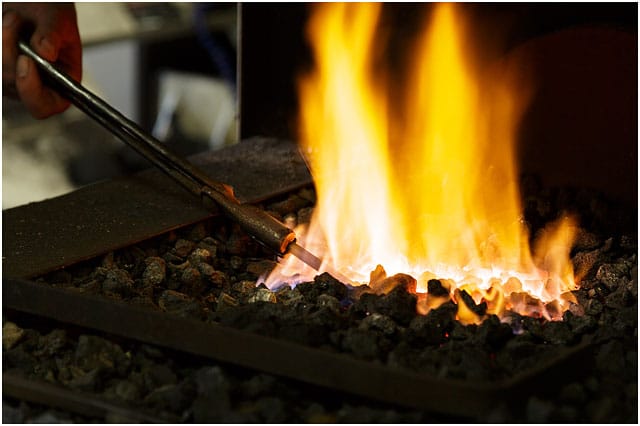
You completed your year-long sabbatical; big cheer, what now?
Back to school and then I was on the hunt for workshop space. I wanted it to be close to school and close to home. That way, I could go and do a half day at school and still feasibly fit in a half day at the workshop. Anything that involved going outside of Portsmouth meant it just wouldn’t happen. I was lucky to find this place and, with a bit of persuasion, rented it from the council. It fits the bill perfectly.
Little Duck Forge is situated in one of the industrial units within the grounds of Eastney Beam Engine House, a well-known Portsmouth and Southsea public museum .The pumping station is an impressive Victorian building containing a pair of classic Boulton Watt beam engines and pumps, restored to their original 1887 condition.
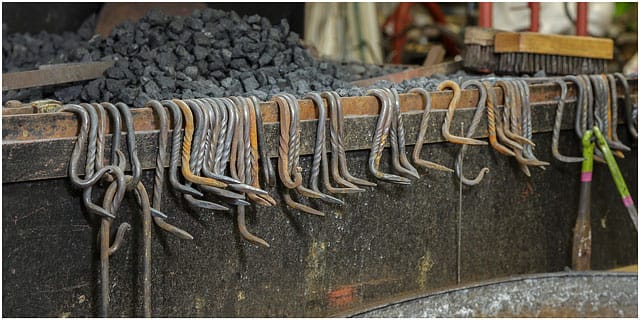
The workshop has been found; what about all the equipment?
Most of it I’d collected over the years, anyway. I had a lot of silversmithing kit. I’d done quite a bit of that, along with copper work. All that’s different to the blacksmithing is that you need a hammer, tongs and fire. We made a hearth at college as part of the year-long course, and a number of tongs. You don’t need an expensive hammer. You start to get fond of hammers that cost more, but you don’t really need anything more than the common ball pain hammer that you can pick up anywhere.
You start to get fond of hammers that cost a bit more, but
you don’t really need anything more than the common ball
pain, that you can pick up anywhere.
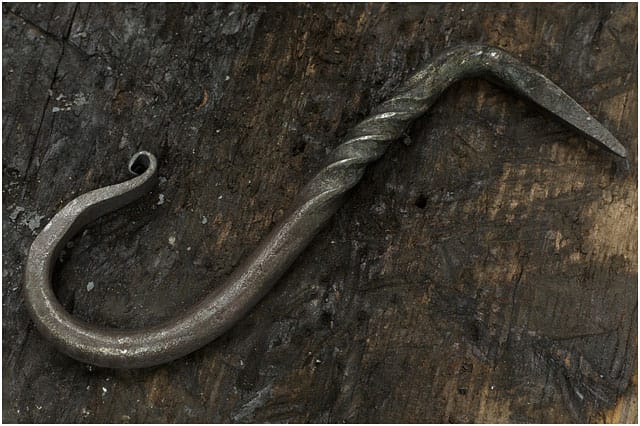
Armed and ready to rock and roll. When did you make the jump from teaching?
I was running the business part time, alongside teaching, up until last summer [2013]. At that point, it was an expensive hobby, driven solely by my passion to master the craft. As time went on, the demands from school were starting to impinge on what I had going on at the forge, so I had to make the decision. Which, obviously, I did.
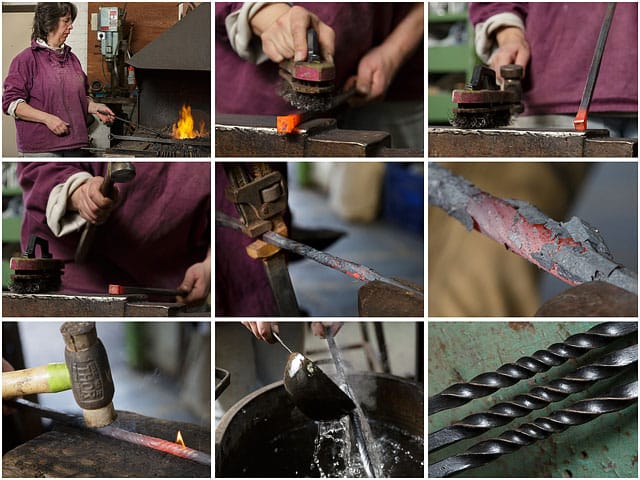
You describe yourself as an Artist Blacksmith …
I call myself that because I’m trying not to get too many engineering type jobs. But it’s part of the whole scene in the Blacksmithing world, where people do the more decorative type of work. Many of them wouldn’t describe themselves, personally, as artists, and I struggle with the term artist myself.
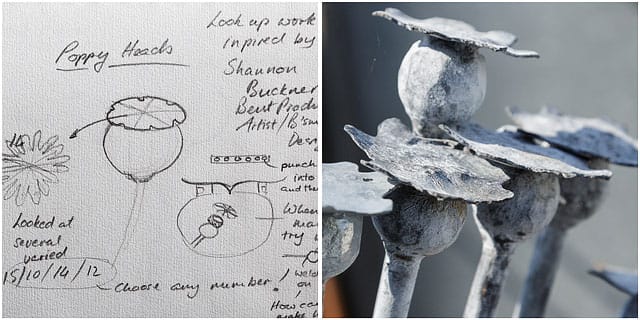
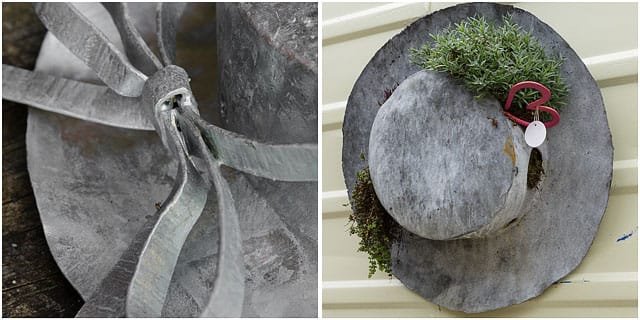
Why do you think that?
Well I don’t think I have the free, creative, mind of a true artist. I have a friend that’s an artist. We did a silversmithing course together. I’m a good technician, whereas she ruins tools, does amazing things, and comes out with some incredible stuff. Her journey isn’t a fair one on any of the equipment en route; things are abused and discarded without concern, because she has the vision. Everything and anything is fair game, and just a means of getting to the end result. That’s just not me. I’m more of a problem solver. But, I do think I have an eye for good design and what would be considered attractive, so I think I have enough of that to be able to justify the use of the term [laughs] .
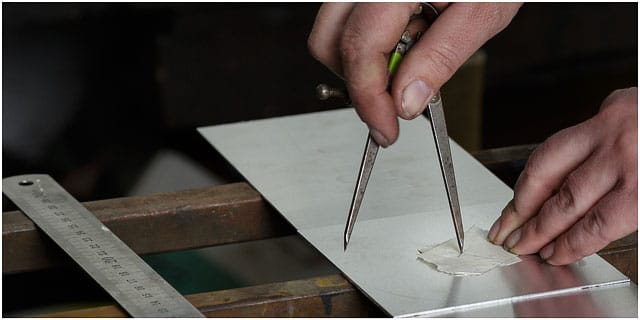
I was just trying to establish whether it was Artist first or Blacksmith first or …
I think it’s designer first. I’ve actually put that on the sign ‘Artist/Designer, Blacksmith’. I think that, ultimately, designing and coming up with solutions to problems, is my real forte.
When you’re approached for a commission, do you have free reign on the design?
With the commissions, for example a set of gates, I tend to come up with a design, present a series of sketches within a price bracket, and the customer will pick one. In some cases, I’ve just been asked to get on with it.
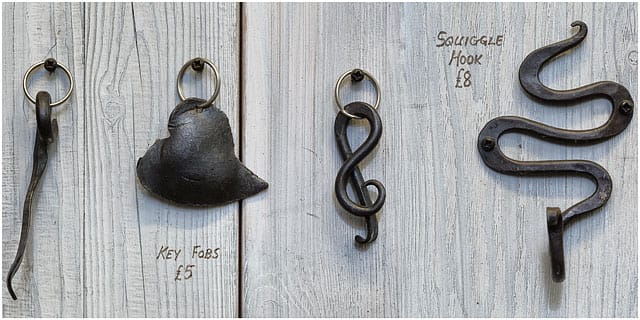
That’s quite a leap of faith
Yes. It can be a bit nerve-racking turning up with my fingers crossed behind my back thinking, ‘” I hope they like it’” It dawns on me, when I’m half way through, that they haven’t seen any pictures, or work in progress, at all. But there, it’s where they’ve seen my work and trust me to be sympathetic to what they’ve asked for, and we’ve discussed. I had a commission for a handrail recently; nothing special, just a small job. The brief was ‘please make us a handrail that doesn’t look like old frail people live here’.
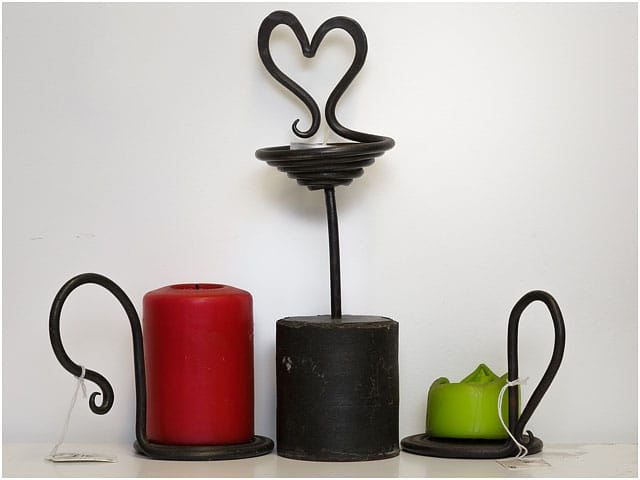
Well it is a brief
Yes, in other words, we don’t want the standard tubing that the council pushes, we want something a bit more decorative, and bit more interesting, that still does the job as well. So you go away, have little think, and come up with ways of making something relatively simple, but within the budget.
Please make us a handrail that doesn’t
look like old frail people live here
Do people ever come to you with photographs as a reference
I’ve had one or two people come to me and ask me to replicate something that I know full well is another blacksmith’s work, but there’s no way that I’ll even contemplate it. It’s their design and creativity. To be quite frank, I advise them to go to the original artist and get them to make it for them. Through experience, you can spot a blacksmith’s work by their style. So I can usually supply the name of the blacksmith, if the customer found the piece via a Google search, and didn’t bother to note the associated artist.
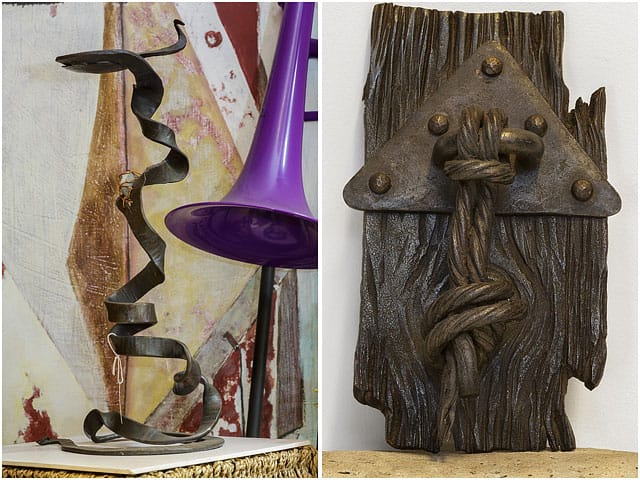
Is it a fairly close-knit community?
There are a lot out there that don’t know each other. But there’s also a large group that do, and they know each other’s work. That’s mainly through The Artist Blacksmith magazine. The association’s magazine is a good way to see the work of others and their styles. I write-up the events pages for the magazine.
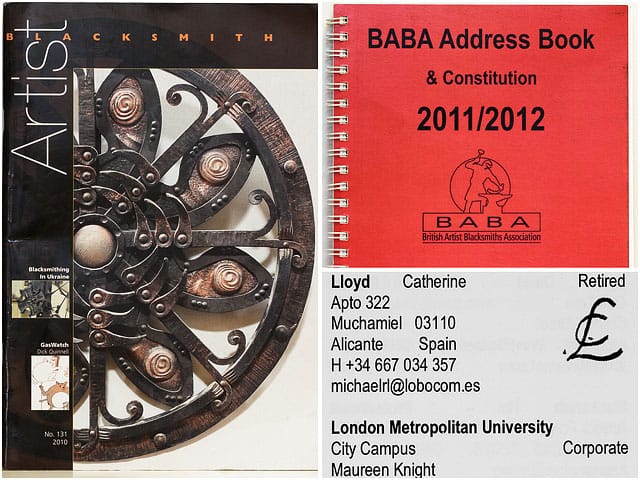
How would describe your own style?
I haven’t got one yet. I’m still finding my way.
How did the name ‘Little Duck Forge’ come about?
I started as ‘Iron Maid’. But that has turned out to be completely useless, for what is now obvious reasons. An internet search will nearly always give you links to the rock band. It doesn’t help if you add metalwork to the search. Same thing. Also, a lot of people didn’t get the ‘Maid’ bit. The final straw was when I was in a cafe one day, wearing my Iron Maid top, when this lady approached me and said ‘I hope you don’t mind me asking, how does the service work, do we bring the ironing to you, or do you collect it?’
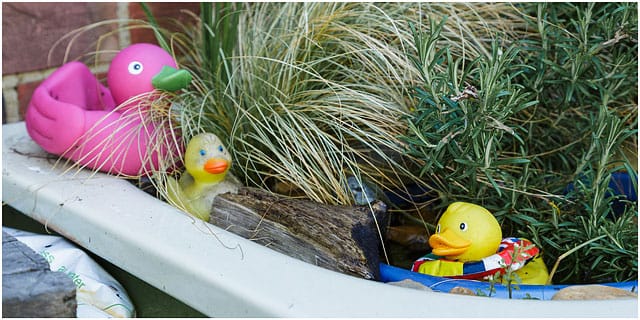
Ahh, not quite the right message then [laughs] It’s fair enough really, because there’s company in Glasgow called Iron Maid, which is an ironing service. So that was the end of that. Anyway, my maker’s mark happened to be a duck, because I like ducks, and used to keep them. So I decided to make that the new name. To be honest, it’s actually worked very well. It’s got a great feel-good factor. When I’m at shows, it’s always been well received, and seems to fit in with what people are expecting with the type of work that I do.
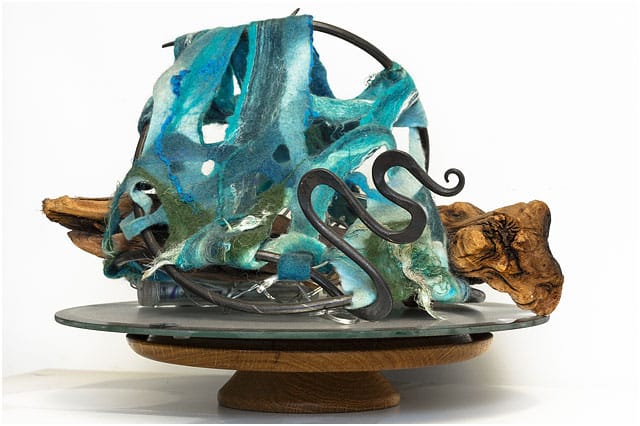
Do you attend many shows as Little Duck Forge?
I did quite a lot last year (2013). The year before, only one or two. Last year was pretty much a testing ground to see which ones were suitable for me as a business. I’m cutting down significantly this year, although I’ll be doing a couple of new ones. More for the fun of it, if I’m honest. I’ve discovered some really nice shows out there that are just really good to be part of. Clearly, I would like to sell a few pieces if I can, but it’s more a case of going out to play than anything else [laughs]
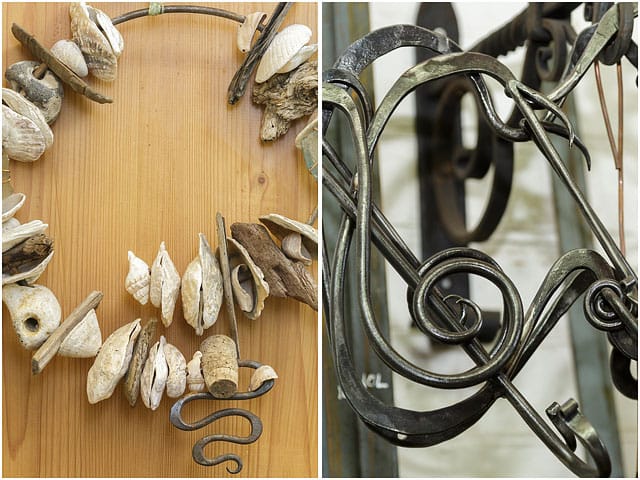
You can’t take your forge with you to a show, so how does that work?
I have a mobile hearth. It’s a double kitchen sink mounted in an old post office trolley, what we call a ‘bottom blast hearth’. A very simple beast, but it does the job. One half has the water for quenching, the other holds the fire. There’s a car disk brake for the tuyere, with hot coals around it.
http://en.wikipedia.org/wiki/Tuyere
A tuyere, which can also be spelled as tuyère, is a tube, nozzle or pipe through which air is blown into a furnace or hearth.
A tuyere, which can also be spelled as tuyère, is a tube, nozzle or pipe through which air is blown into a furnace or hearth.
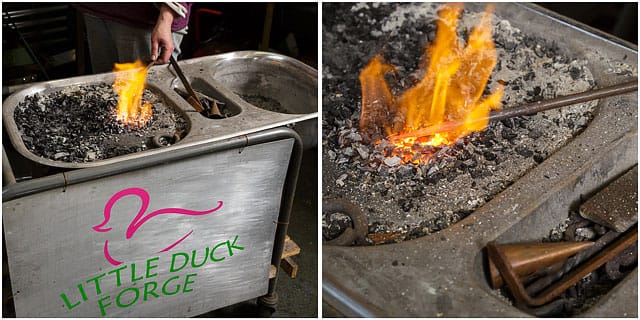
You don’t do fry ups on it, I suppose?
Actually, I do. At the end of the day, I clean it off and cook my burgers. It’s had a whole day keeping warm, which means it has loads of residual heat, which is a shame to waste. But the burgers are just for me [laughs].
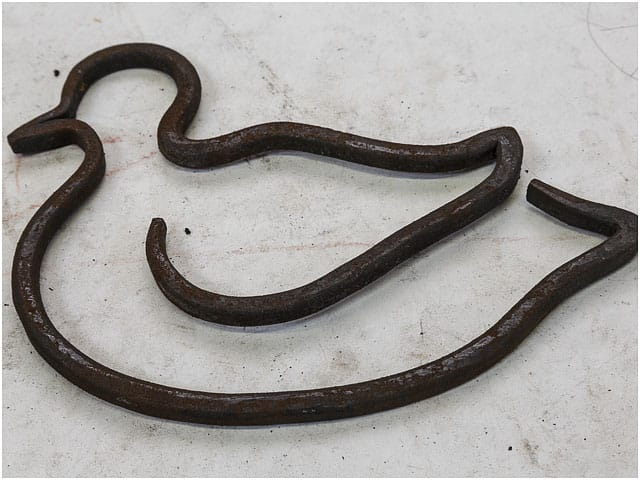
How do you transport it? Do you have Transit van or something?
I do actually. Well, a camper van, which I stay in when I go to shows. When I went to Hereford College, I camped in it for a year. I’m still going to Hereford every couple of months for a block release, advanced skills course. An apprenticeship in a way, where you do a week at college then two months off to do the coursework. I must admit that’s not working as well as I’d like it to be. At the moment, I’m trying to cut down on the commissions so I can concentrate more on getting the best out of it. I’m being tutored by someone who is regarded as one of the masters in the country.
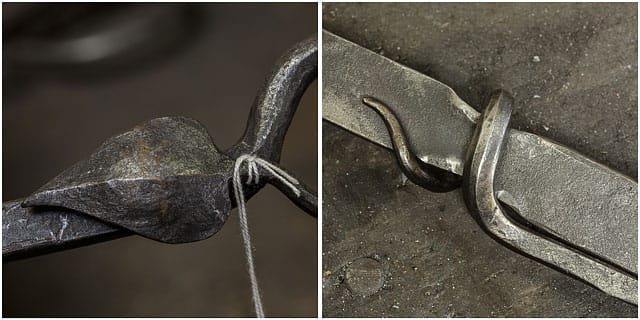
Who’s that?
Paul Allen. He’s associated with a former organisation called COSIRA, essentially a rural commission, which was founded in the 1920s. Their role was to revive blacksmithing after WWI. At that time, with fewer horses on the roads after the introduction of the motor car, the craft of the farrier almost died out. All of the rural work was disappearing, and these blacksmiths were struggling to find enough work to go around. So, COSIRA was tasked to retrain blacksmiths in new fields, and introduce a broader range of things that they could do. They also created a catalogue of designs, gates, railings and things like that, so that a blacksmith wasn’t required to be artistic by nature. They could buy in a design and work from that.
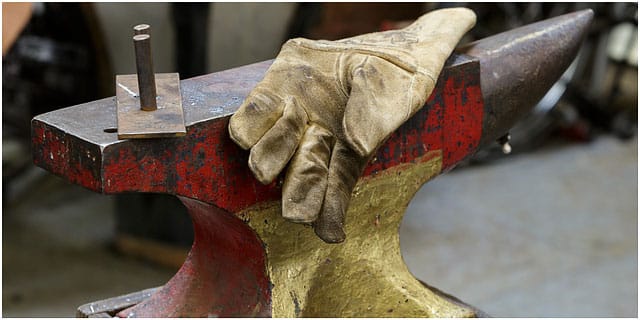
For all of his career, Paul Allen has been involved with the various forms of COSIRA. The education element became the NETS (New entrants training scheme) course, and is now taught, by Paul, as Design and Forgework Skills at the Hereford College of Technology. He still trains blacksmiths, such as myself, in the traditional skills. Any blacksmith that has done a course and not been self taught, and has tried to take it to the next level, has probably been taught by Paul.
National UK Champion Blacksmith in 1994, Paul is a certificated Licentiate teacher and Liveryman of the Worshipful Company of Blacksmiths, as well as a Licentiate of the City & Guilds Institute. He is actively involved in teaching as a part-time tutor at the National School of Blacksmithing in Hereford and is well-known all over the country.
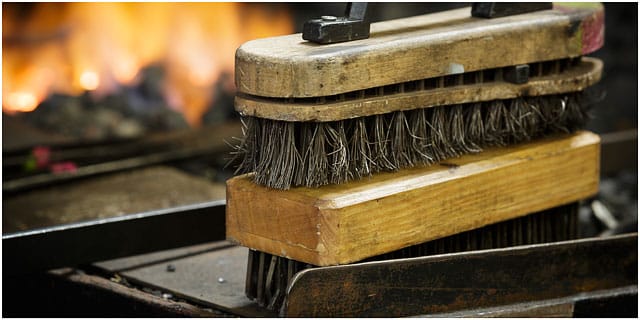
You’ve started running your own courses?
I run ‘Blacksmith for a Day’ taster sessions, here at Little Duck Forge. I can combine my experience as a teacher, with my knowledge of blacksmithing, at a level which is suitable for a beginner. This is an area that I’d like to expand upon, as I really enjoy the combination. Ideally, I would like to spend fifty percent of my time with these sessions, and the rest of the time exploring the design and artistry side of the field.
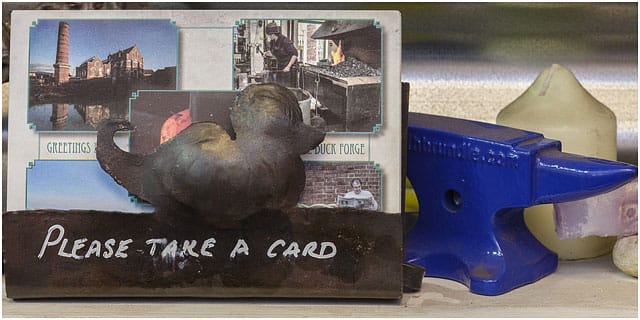
What happens at a taster day?
Apart from a quick show round the site and facilities, it’s straight into making something, right from the word go. Usually a fairly simple item, such as a beam hook. Although it’s only a small item, it requires using a wide range of skills, without wearing your hands out, so it’s a perfect starting point. I encourage everyone to come along with an idea of what they would like to make. So far, we’ve had a fantastic range of ideas. We have an obligatory tea break, during which we discuss what’s going to be made, and make full scale drawings. The rest of the day is spent actually making their choice of item. At the end of the day, you go home with a little hook and whatever you’ve made. I’ve only been running the courses for about eighteen months, but I’m starting to get repeat bookings now.
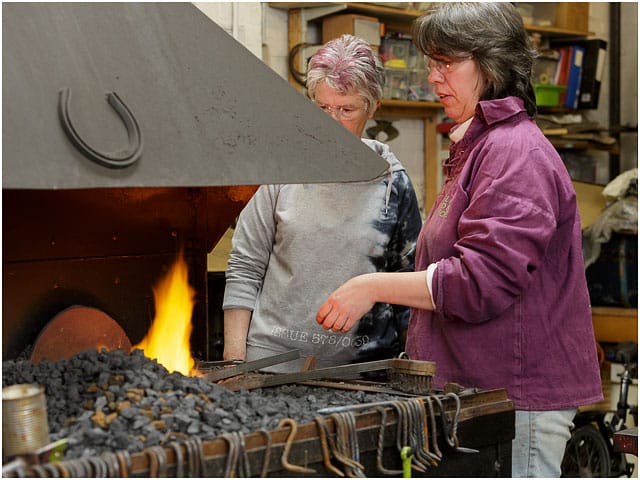
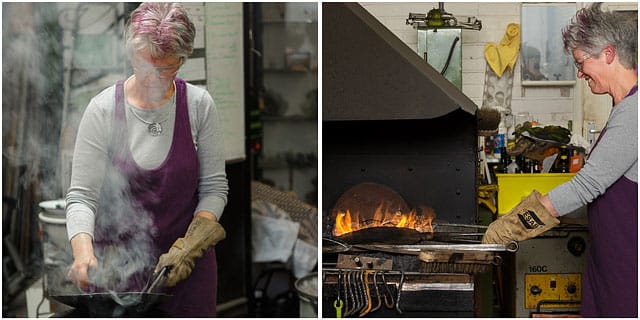
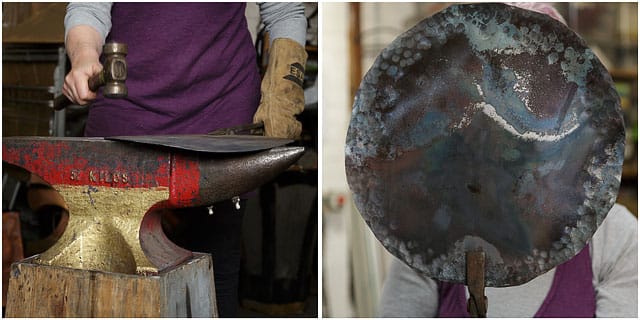
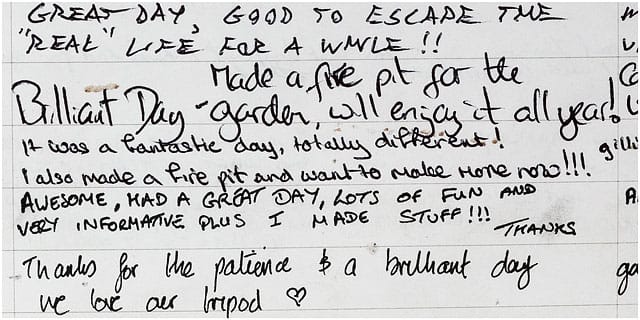
What’s the largest piece that you’ve made?
Physically, that would be an eight foot Christmas tree for the Stansted Christmas Festival. Originally made for them as a centre piece, and sold to a gentleman this Christmas.
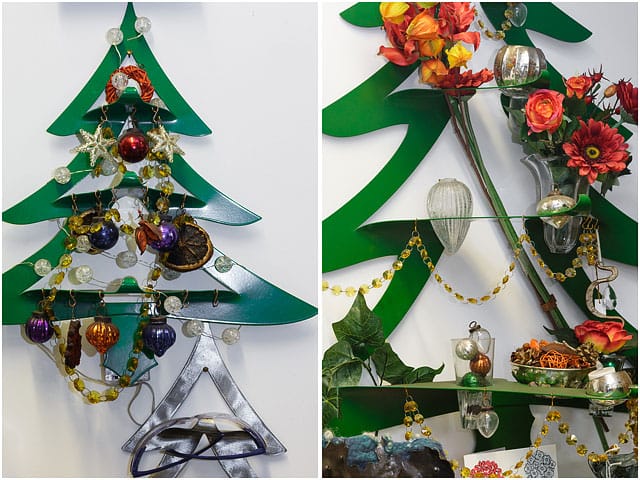
Do blacksmiths sign their work?
Yes, there’s what we call a ‘touch mark,’ which is a hot punch or stamp used on the hot metal to show who made it. Mine, unsurprisingly, is a duck. Unfortunately, I often forget to add it to my work. The problem is that, by the time I’ve remembered, it’s too late, because the metal has to be heated up again to add it. The industry is trying to encourage their use. There’s an address book for Artist/Blacksmiths, and those that use a mark have them shown alongside their entry.
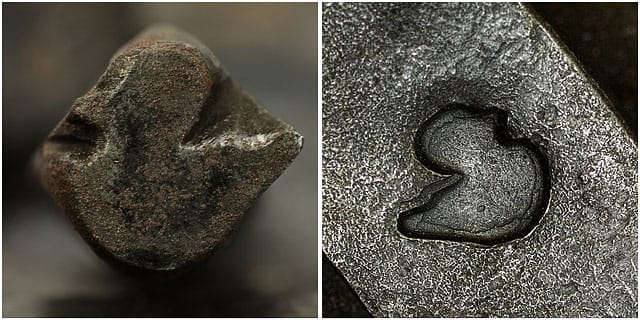

Would you say, as a generalisation, that the style of any given blacksmith would be representative of the ‘perceived’ personalities of his or her country.
In a way, yes. France has a very delicate style; Germany is as you would expect it to be [laughs]. I’m going to Poland next week to visit friends. I’m really looking forward to that, as the churches, apparently, have some incredible metalwork.
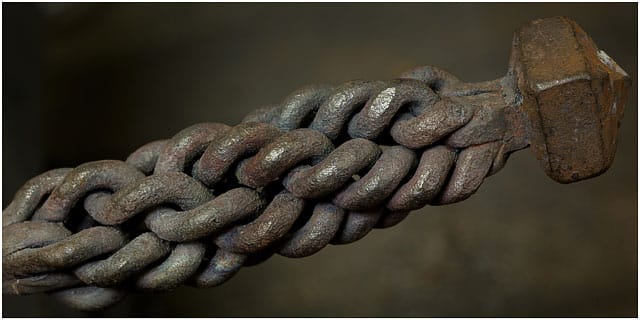
I guess there’s quite a range of styles in the UK?
Well, it’s still a very British style wherever you go, North, or south. As a nation, in the 1600s, we adopted a lot of the French style, because of a guy called Jean Tijoue. He’s effectively behind a lot of what is seen as the traditional metalwork in this country.
Jean Tijou was a French Huguenot ironworker. He is known solely through his work in England, where he worked on several of the key English Baroque buildings. He arrived in England in c.1689 and enjoyed the patronage of William and Mary for whom he made gates and railings for Hampton Court Palace.
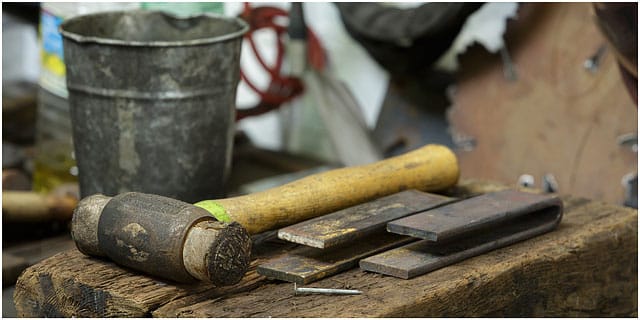
Apart from the workshops, is there anything else on the horizon?
I’m looking at specialising in memorials, and I’ve just started a collaboration with the stonemason next door to us. It’s a father and son business (Somerville Stone) and Darren, the son, and I are planning how we might work together in a way that complements both of our skills. He does some superb work, and I think we could make some interesting memorial pieces. The council have given us the go ahead to convert the piece of land adjacent to us into a memorial garden. The plan is to use it to display some of our work. I’m attracted to the idea of creating something that requires quite a bit of thought and reflection. The fact that a memorial should represent the life of a person, no longer with us, is perfect for that sort of artistic outlet.
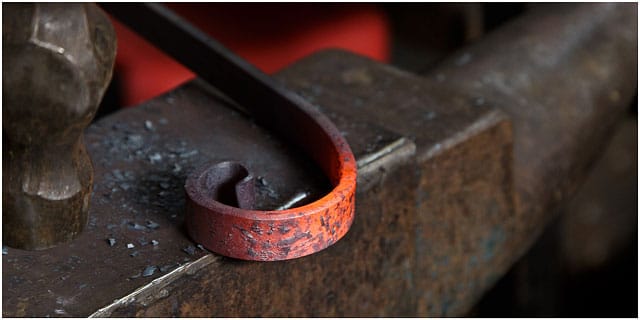
I would like to say a personal thank you to Lucille Scott for her time and contribution to the Weekend Passions blog. Also to Sheena Bond for granting me permission to photograph her in action, during one of the Little Duck Forge tasters days. There’s a link to the details of Sheena’s ceramics workshops below. If you fancy a taste of being a blacksmith or would like to ‘gift’ a day to a friend, partner, or member of the family, you can find more details on Lucille’s website.
Web Links and References of interest
Little Duck Forge
Web: http://www.littleduckforge.co.uk
Email: [email protected]
Mobile: 07880 724699
Postal Address:
Little Duck Forge
Eastney Beam Engine House
Southsea
PO4 9JF
Google Maps: http://bit.ly/1jNgx0X
Somerville Stone
Web: http://www.somervillestone.com/
Email: [email protected]
Mobile: 07711 386023 / 08432 894788
The British Artist Blacksmith Association (BABA)
Web: http://www.baba.org.uk/
Paul Allen
Web: http://www.artinmetal.co.uk/about.htm
Eastney Beam Engine House
Web: http://www.portsmouthmuseums.co.uk/museum-service/Eastney-Beam-Engine-House
Sheena Bond (Ceramics workshops)
Web: http://www.sheenabond.co.uk
Email: [email protected]


